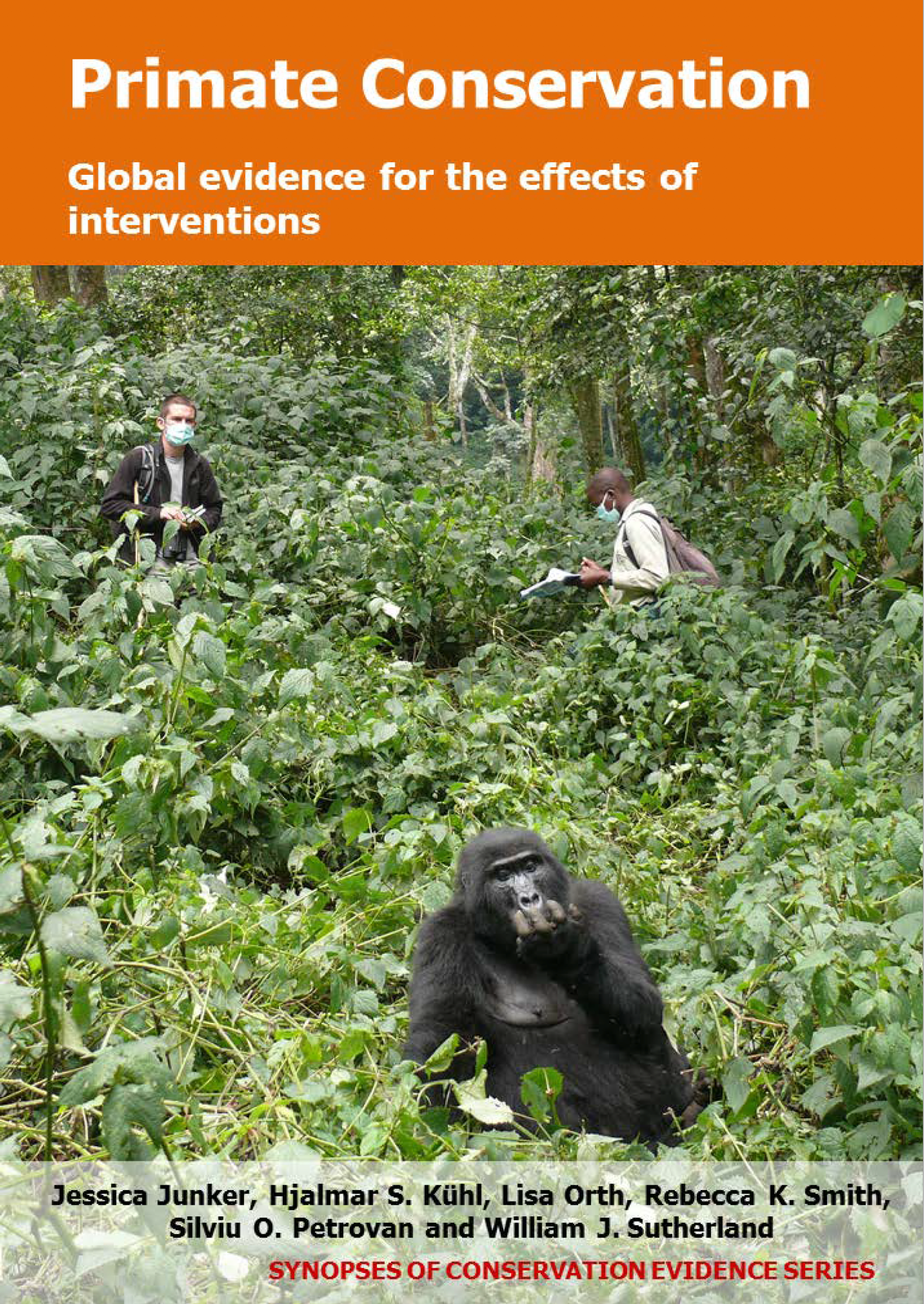Implement community control of patrolling, banning hunting and removing snares
-
Overall effectiveness category Likely to be beneficial
-
Number of studies: 3
View assessment score
Hide assessment score
How is the evidence assessed?
-
Effectiveness
70% -
Certainty
50% -
Harms
0%
Study locations
Supporting evidence from individual studies
A site comparison study in 1996-1997 in localities near Garamba National Park and Azande Hunting Reserve, Democratic Republic of Congo found that traditional community control discouraged more efffectively illegal bushmeat hunting of protected species, including chimpanzee Pan troglodytes, during both times of peace and war, compared to the centrally run national park. In village markets, where the community village chief regulated bushmeat hunting, protected species represented a low proportion of total bushmeat quantity (21% in peacetime; 18% during the war) while in urban markets, bushmeat originating from the centrally-run national park was mostly illegally-hunted protected species (68% of total quantity in peacetime; 91% during the war). The village chief discouraged owning of automatic weapons, needed for large-bodied protected species, and hunters relied on shotguns, snares and nets. Legally hunted bushmeat included nine species of primates (Cercopithecus sp., guereza colobus Colobus guereza, olive baboon Papio anubis, etc) while most illegal bushmeat included elephant Loxodonta africana, buffalo Syncerus caffer, etc. Five bushmeat markets were monitored over 15 months for the urban trade and the two markets for the rural trade.
Study and other actions testedA before-and-after study in 2009-2012 in tropical forest near Takamanda National Park, southeastern Cameroon found that after implementing community control and monitoring of illegal activities as part of the Gorilla Guardian programme, no incidents of Cross River gorilla Gorilla gorilla diehli poaching occurred over three years. Guardians were selected by their respective communities and collaborated with local hunters and served as informants reporting threats to gorillas. The programme was started with six guardians from communities in three forest areas near important gorilla sites. Two other communities were added to the network in 2011 and because of increased interest in the programme, yet another two communities joined in 2012. Guardians fulfilled the role of anti-poaching rangers and communities were directly involved in gorilla research and conservation management. The study does not distinguish between the effects of the different interventions mentioned above.
Study and other actions testedA site comparison in 1983-2013 in tropical forest in the Cross River area, Nigeria found that Cross River gorilla Gorilla gorilla diehli and Nigeria-Cameroon chimpanzee Pan troglodytes ellioti densities were higher in the Mbe Mountains, a site managed by a community conservation association than in adjacent sites (Afi Mountain Wildlife Sanctuary and the Cross River National Park) which were not managed by local communities. Furthermore, levels of wildlife hunting in the Mbe Mountains were relatively low compared to the other two sites and no reports of hunting of either gorilla or chimpanzees had been reported over 30 years. However, no figures were provided and no statistical tests were carried out to determine whether this difference was significant. At Mbe Mountains there was strong community support for conservation, As part of the community programme, 13 trained eco-guards regularly carry out anti-poaching and monitoring patrols in the area.
Study and other actions tested
Where has this evidence come from?
List of journals searched by synopsis
All the journals searched for all synopses
This Action forms part of the Action Synopsis:
Primate Conservation
Primate Conservation - Published 2017
Primate Synopsis





)_2023.JPG)














